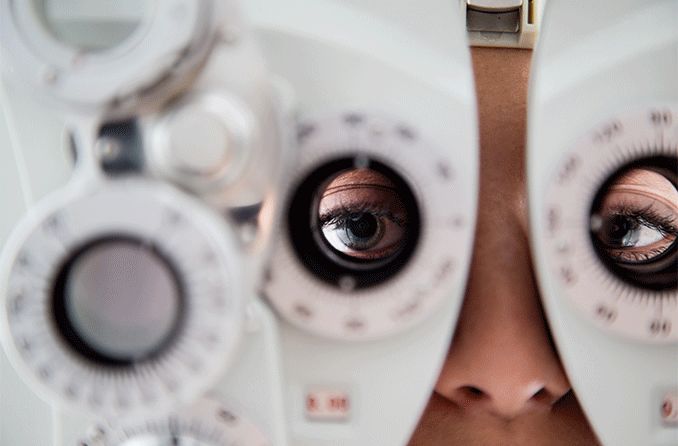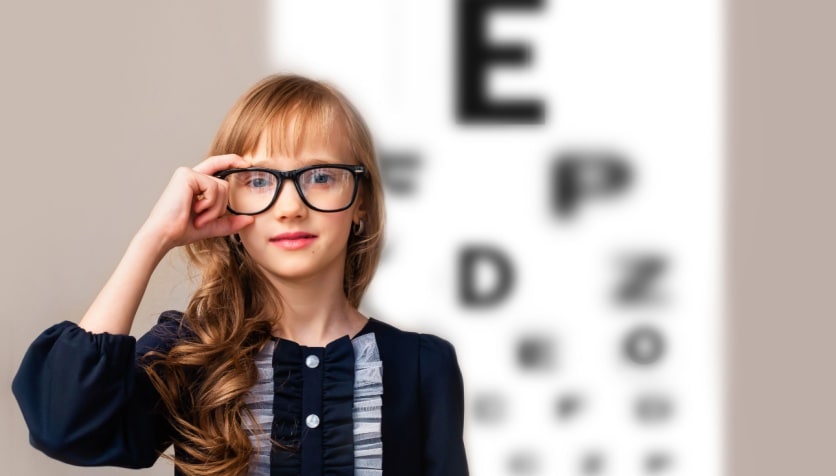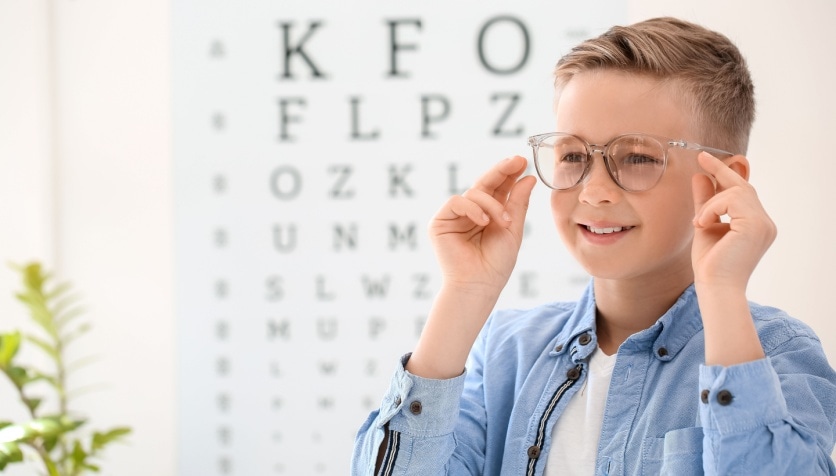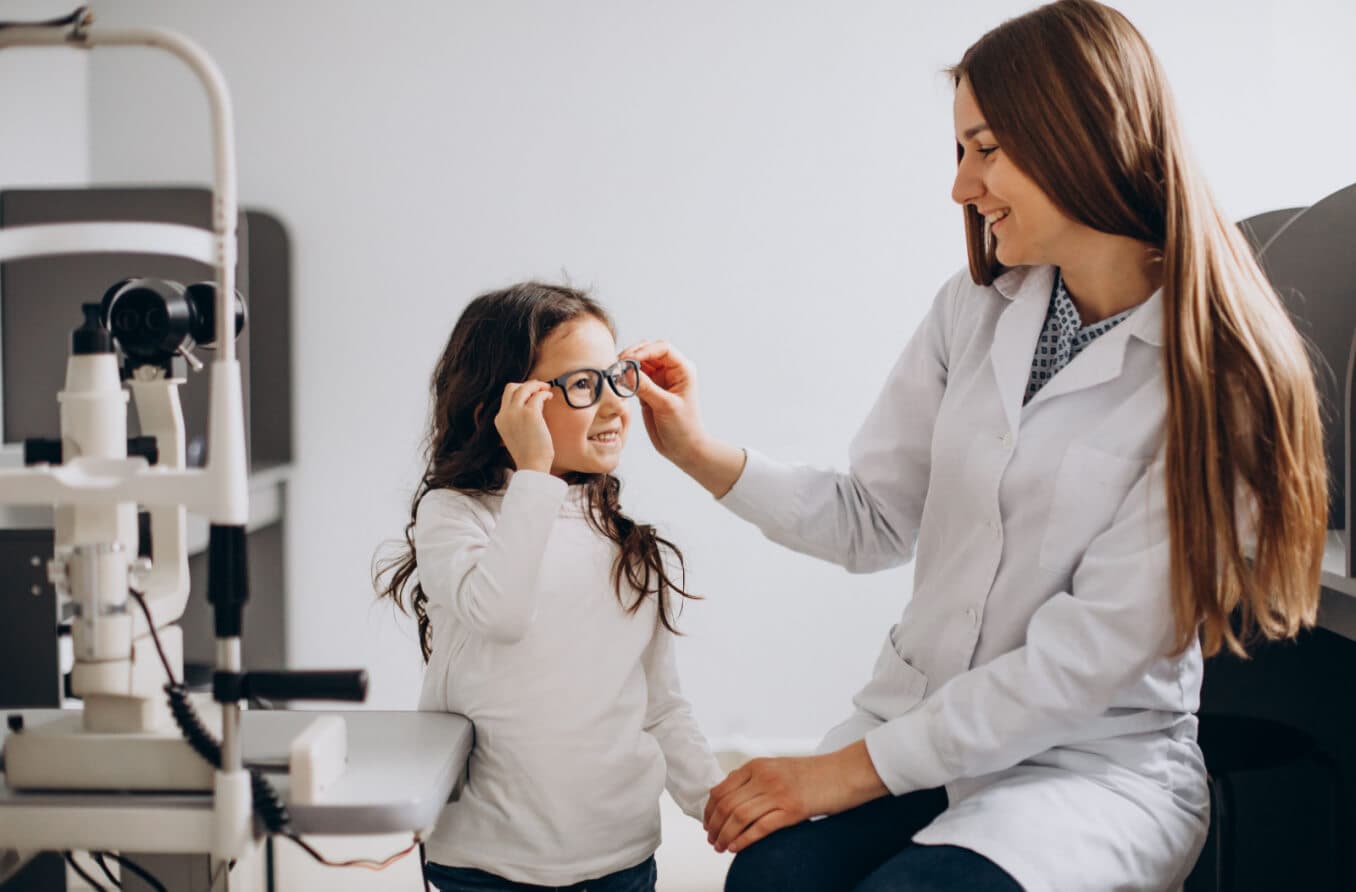Is myopia more genetic or environmental? This is myopia’s great nature vs. nurture question. Myopia is due to a complex interaction of genetic and environmental factors unique to each individual. In other words, both factors affect individuals to differing degrees.
Here’s a look at the latest research about the role of genetics and environment in myopia, and what scientists have learned from these studies.
Environmental factors
Several environmental factors may contribute to the development of myopia. These factors include:
Not enough outdoor exposure
Consecutive hours of near work without vision breaks
The Consortium for Refractive Error and Myopia and 23andMe combined their research in a genome-wide association study meta-analysis. They concluded that environmental factors play a significant role in the development of myopia.
The simultaneous rise in rates of myopia and near work (and screen time) in the last few decades supports this theory.
A lack of outdoor light exposure
A 2021 study looked at the effect of outdoor exposure on myopia development in childhood, adolescence and young adulthood. It found that increased outdoor exposure during these years resulted in a reduced risk of myopia development. Spending more time outside in adolescence also decreased the risk of developing late-onset myopia (onset after the age of 15).
Growing research has shown that myopia is more prevalent in children who have less outdoor light exposure. In other words, when children don’t get enough time outside, they have an increased risk of becoming nearsighted .
Sustained near work
A 2020 myopia study looked at the interaction between genes and environment in Chinese children aged 6 to 9 years old. Time spent on homework and looking at screens had a higher association with myopia than any other factor. This was true even when the role of genetics was taken into account.
The International Myopia Institute (IMI) has identified factors that may contribute to the risk of developing axial myopia (the most common form of childhood myopia). These include doing near work:
At very close distances (less than 20cm away)
For extended periods of time (more than 45 minutes)
Other studies have also pointed to excessive near work at close distances as a possible risk factor for myopia development. But the data correlating too much near work with myopia has been conflicting. Researchers have found an association between myopia development and extended near work. However, they don’t know if near work is the exact cause.
Still, the close association between environmental factors and myopia development is widely acknowledged by vision scientists. This is apparent in the number of studies being done on whether COVID-19 quarantine has resulted in higher myopia rates in young children. Online learning and fewer outdoor activities are the reasons most often cited in these studies.
Genetic factors
Genetics also play a large role in the development of myopia. One of the strongest cases for a genetic role in myopia is the clear association between myopic parents and myopic children. Children who have two myopic parents are more likely to be myopic.
Researchers recently conducted a review of myopia prevalence around the world. They found that the risk of myopia was three times higher in children who had parents with myopia than in those who didn’t.
Genome-wide association studies have identified over 200 genes associated with myopia. How these genes cause myopia is not yet clear. These studies suggest that myopia results from the interaction of many genes. And each of these genes contributes a little bit to myopia onset or progression.
Myopia is the result of both environment and genes
Vision scientists have also analyzed thousands of families (and twins). They found that environmental triggers may affect how myopia genes are expressed. For example, some studies found that genetics, combined with higher education, resulted in a higher risk of myopia development than any other single factor.
Another study looked at the effect of sports and outdoor activities on children who had:
Both parents with myopia
One parent with myopia
Neither parent with myopia
Researchers found that low amounts of outdoor activity increased the risk of myopia in children with two myopic parents. But children with only one or no myopic parent had a lower risk, even with low amounts of outdoor activity. Children with two myopic parents may have genes that make them more vulnerable to environmental influences.
Studies of Alaska Native parents and children have found that their heritability of myopia was only 10%. Yet, a separate study of female twins found that the association was 98%.
According to the IMI, only 5% to 35% of the variation in myopia can be explained by genes, and the heritability of myopia is probably between 60% and 80%. Vision scientists have speculated that this wide range may result from environmental influences.
Ethnicity and location may be associated with myopia development
The prevalence of myopia has risen all over the world, and Asian countries have had the highest rate of increase. It’s possible that some ethnicities are more influenced by environmental triggers. It may also be possible that certain environmental triggers are more prevalent in some parts of the world.
East Asia has the highest prevalence of myopia at 69% (up to 86% among Singaporean-Chinese people ages 15 years and older). Black people in Africa have the lowest prevalence at 5.5% at 15 years and up. Caucasian adults in Europe and North America have a myopia prevalence of about 25% to 33%.
Studies in Australia and the US suggest that ethnic background may have a role in myopia development due to both genetics and lifestyle. These studies found that children of Asian descent were more likely to be myopic. The studies also cited that Asian children get about seven fewer hours of outdoor time per week than Caucasian children.
A 2011 UK study looked at nearly 3,000 students aged 12 and 13 in Birmingham, England. They found that second- and third-generation British South Asian children had higher levels of myopia. Their classmates with white European ancestry had lower levels of myopia.
The children of different ethnicities presumably grew up in a similar environment, and any differences in lifestyle and environment were taken into account. These findings suggest that the genetics of certain ethnicities could play a role in whether myopia is developed.
A meta-analysis of 50,000 adults in 34 Asian and European countries provides additional evidence for this theory. It found a higher correlation between near work and genetics in Asians rather than Europeans.
Another study published in 2021 provides further support. The prevalence of myopia has soared in Asian schoolchildren. Yet Scandinavian school children have continued to have low rates of myopia.
The researchers analyzed the refractive error, axial length, parents’ incidence of myopia, time spent doing near work, and time spent outdoors. They too concluded that genetics, specifically due to ethnicity, may play a role in myopia development.
Socio-economics was also cited as a factor. Other studies have shown children living in urban areas have an increased risk of myopia. These areas have high population density and pollution, which may result in children spending less time outdoors.
SEE RELATED: How Eye Disease Affects Asian and Pacific Islander Americans (AAPI)
Genetics, environment and early intervention
Research indicates that there is no exact ratio of genetic to environmental factors that applies to all people. Both environmental factors and genetics seem to play large roles in myopia development in the school years.
In general, the younger a child is when they develop myopia, the more likely they are to have high myopia later in life. This leads to a greater risk of developing vision-threatening complications from high myopia, such as:
Myopic maculopathy
It’s very important, then, to make lifestyle modifications that may decrease the risk of myopia development. You should try to:
Increase outdoor exposure. Encourage children to spend at least 80 to 100 minutes outside each day.
Take visual breaks during extended near work. Look up and gaze across the room after a period of near work. If possible, step outside for your visual break. Also try to maintain a comfortable distance from your screen or book.
Delay the introduction of screen time in very young children. The effect of screen time on young children is still being studied. But research indicates that delaying use of digital devices is beneficial.
Undergo comprehensive, routine eye exams. Strategies to slow the progression of myopia are available. A qualified eye doctor can evaluate which options may be appropriate for your child.
READ NEXT: Can you prevent myopia?










